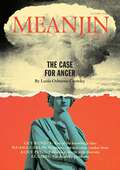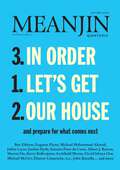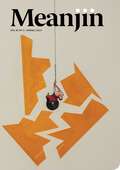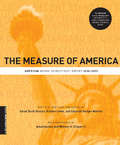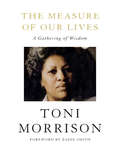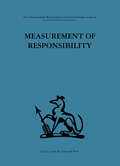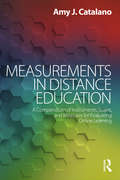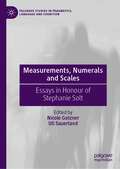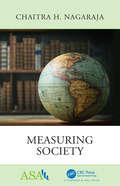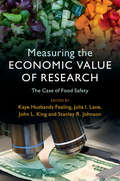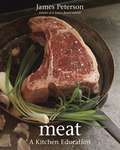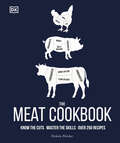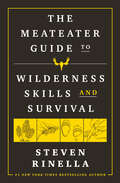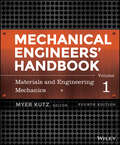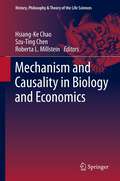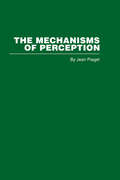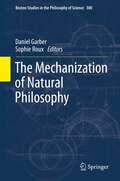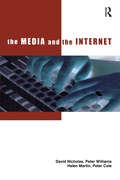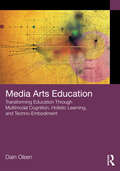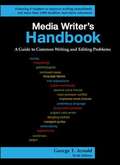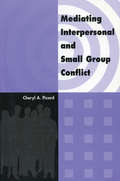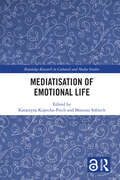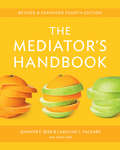- Table View
- List View
Meanjin Vol 81, No 1
by Meanjin Quarterly' . . . embracing anger is a political act. This is not a personal project but a social one-being passive and perpetually afraid of your power reinforces the status quo, and I am no longer interested in that. Anger is a complex emotion, which is exactly why my child-brain suppresses it, and exactly why we as a society are afraid of it. Anger teaches us that not everything has to be either/or.' In a profound and personal essay, Lucia Osborne-Crowley writes on learning to embrace anger as a multi-faceted emotion. Anger can be an act of caring, anger can be a force for personal power, and inter-personal good; anger, she says, 'can sit alongside love and hope and connection rather than being their opposite.' Guy Rundle studies the rise of the Knowledge Class, the laptop tapping workers at the core of the west's new economy, and details the challenge - and opportunity - this growing group poses for traditional progressive politics. Na'ama Carlin found her first pregnancy challenging, a minefield of existential and practical complication. Then she was diagnosed with aggressive breast cancer. Author Alice Pung writes on the vexed politics of 'diversity' in the Australian publishing industry. Futurist Mark Pesce is anxious about the social implications of the Facebook 'metaverse', but that's just the tip of the iceberg. Critic and curator Chris McAuliffe looks at the hidden and very complicated history of the Australian flag. El Gibbs writes on the hidden pandemic: of living with both covid and disability. Other essays from Declan Fry, Martin Langford, Gemma Carey, Madeleine Gray, Jill Giese, Bruce Buchan and more. Memoir from Alice Bishop, Alexander Wells, Dominic Gordon and Hannah Preston. New fiction from Jennifer Mills, Ouyang Yu and Christopher Raja. New poetry from Adam Aitken, Lucy Dougan, Ashleigh Synnott, Stephen Edgar, Svetlana Sterlin, Junie Huang and more. Reviews from Millie Bayliss, Imogen Dewey, Hasib Hourani, Thabani Tshuma and Rosie Ofori Ward.
Meanjin Vol 82, No 1
by Meanjin QuarterlyLight, air and the autumn wind. Good drying weather. Ethics and history and peace and war and the laundry. Taking stock. Abandoned cities, lost children, political legacies emptied of all honour. ???????????. How we commemorate, and what we forget. The cost of education, the cost of living, the costs of doing nothing. Insects, birds, bulls, deer, saplings, forests, the Great Barrier Reef. Ethical beekeeping, hydrogeology, the second person. Ruin porn and inspiration porn. Solar Punk and Chengyu and the Argonauts. Housing and home, love and Metta, class and compassion. Understanding where it is that we exist when we're gathering our forces. Let's get our house in order - and prepare for what comes next.
Meanjin Vol 82, No 3
by Meanjin QuarterlyGuest-Edited by Bridget Caldwell-Bright and Eugenia Flynn, Meanjin 82.3 Spring 2023 is the first edition in the venerable journal's 83-year history to be devoted entirely to the work of Aboriginal and Torres Strait Islander writers and artists. The Meanjin Paper that opens this special edition is an archival interview with Oodgeroo Noonuccal, followed by a State of the Nation piece by Gary Foley, and an interview with Ali Cobby-Eckermann. There are essays by Gregory Phillips, Tristen Harwood, Apryl Day, Celeste Liddle and Davina B Woods; fiction by Tony Birch, Melanie Saward, Jeanine Leane and Jasmin McGaughey; memoir by Anna Wommatakimmi, Rosa Flynn-Smith and Phillip Bell; critical culture pieces by Ali Gumillya Baker, Paola Balla and Philip Morrissey; experimental work by Paul Collis and Wayne Knight (with Jen Crawford and Paul Magee). There's also poetry by Jim Everett, Maria van Neerven, Maya Hodge, Sam Faulkner, Susie Anderson, Samuel Wagan Watson, Graham Akhurst, Lulu Houdini and Boo Badley, Ellen van Neerven, and Melissa Stannard. And finally, this edition's The Year In... piece is by Wesley Enoch. This edition of Meanjin is available for online order at a discounted rate for Aboriginal and Torres Strait Islander readers only. Apply the code MOBPRICE at checkout.
The Measure of America: American Human Development Report, 2008-2009 (A Columbia / SSRC Book)
by Burd-Sharps SarahThe Measure of Americais the first-ever human development report for a wealthy, developed nation. It introduces the American Human Development Index, which provides a single measure of well-being for all Americans, disaggregated by state and congressional district, as well as by gender, race, and ethnicity. The Index rankings of the 50 states and 436 congressional districts reveal huge disparities in the health, education, and living standards of different groups. Clear, precise, objective, and authoritative, this report will become the basis for all serious discussions concerning the realization of a fair, just, and globally competitive American society.
The Measure of America: American Human Development Report, 2008-2009 (A Columbia / SSRC Book)
by Sarah Burd-Sharps Kristen Lewis Eduardo MartinsThe Measure of America is the first-ever human development report for a wealthy, developed nation. It introduces the American Human Development Index, which provides a single measure of well-being for all Americans, disaggregated by state and congressional district, as well as by gender, race, and ethnicity. The Index rankings of the 50 states and 436 congressional districts reveal huge disparities in the health, education, and living standards of different groups. Clear, precise, objective, and authoritative, this report will become the basis for all serious discussions concerning the realization of a fair, just, and globally competitive American society.
The Measure of Our Lives: A Gathering of Wisdom
by Toni MorrisonAt once the ideal introduction to Toni Morrison and a lovely and moving keepsake for her devoted readers: a treasury of quotations from her work. With a foreword by Zadie Smith."She was our conscience. Our seer. Our truthteller." --Oprah WinfreyThis inspirational book juxtaposes quotations, one to a page, drawn from Toni Morrison's entire body of work, both fiction and nonfiction--from The Bluest Eye to God Help the Child, from Playing in the Dark to The Source of Self-Regard--to tell a story of self-actualization. It aims to evoke the totality of Toni Morrison's literary vision. Its compelling sequence of flashes of revelation--stunning for their linguistic originality, keenness of psychological observation, and philosophical profundity--addresses issues of abiding interest in Morrison's work: the reach of language for the ineffable; transcendence through imagination; the self and its discontents; the vicissitudes of love; the whirligig of memory; the singular power of women; the original American sin of slavery; the bankruptcy of racial oppression; the complex humanity and art of black people. The Measure of Our Lives brims with elegance of style and mind and moral authority.
Measurement of Responsibility: A study of work, payment, and individual capacity (International Behavioural And Social Sciences Ser. #Vol. 51)
by Elliott JaquesTavistock Press was established as a co-operative venture between the Tavistock Institute and Routledge & Kegan Paul (RKP) in the 1950s to produce a series of major contributions across the social sciences. This volume is part of a 2001 reissue of a selection of those important works which have since gone out of print, or are difficult to locate. Published by Routledge, 112 volumes in total are being brought together under the name The International Behavioural and Social Sciences Library: Classics from the Tavistock Press. Reproduced here in facsimile, this volume was originally published in 1956 and is available individually. The collection is also available in a number of themed mini-sets of between 5 and 13 volumes, or as a complete collection.
Measurements in Distance Education: A Compendium of Instruments, Scales, and Measures for Evaluating Online Learning
by Amy J. CatalanoAs more postsecondary faculty become engaged in designing online learning environments, research conducted on distance education program quality becomes increasingly important. Measurements in Distance Education is a concise, well-organized guide to some of the many instruments, scales, and methods that have been created to assess distance education environments, learners, and teachers. Entries are organized according to the qualities these measures attempt to gauge—such as engagement and information retention—and provide summaries of each instrument, usage information, the history of its development, and validation, including any reported psychometric properties. Offering more than 50 different surveys, tests, and other metrics, this book is an essential reference for anyone interested in understanding distance education assessment.
Measurements, Numerals and Scales: Essays in Honour of Stephanie Solt (Palgrave Studies in Pragmatics, Language and Cognition)
by Nicole Gotzner Uli SauerlandThis book brings together chapters on the semantics and pragmatics of measurement, scales, and numerical expressions. The chapters highlight recent developments in measurement theory, the meaning of numerical expressions and the relation between measurement scales and entailment scales. The authors provide explorations in formal and experimental semantics and pragmatics, as well as at the interfaces of this field with others including philosophy of language and sociolinguistics. This book will be of interest to students and scholars in these areas, as well as psychology, psycholinguistics and artificial intelligence.
Measuring Society (ASA-CRC Series on Statistical Reasoning in Science and Society)
by Chaitra H. NagarajaCollecting and analyzing data on unemployment, inflation, and inequality help describe the complex world around us. When published by the government, such data are called official statistics. They are reported by the media, used by politicians to lend weight to their arguments, and by economic commentators to opine about the state of society. Despite such widescale use, explanations about how these measures are constructed are seldom provided for a non-technical reader. This Measuring Society book is a short, accessible guide to six topics: jobs, house prices, inequality, prices for goods and services, poverty, and deprivation. Each relates to concepts we use on a personal level to form an understanding of the society in which we live: We need a job, a place to live, and food to eat. Using data from the United States, we answer three basic questions: why, how, and for whom these statistics have been constructed. We add some context and flavor by discussing the historical background. This book provides the reader with a good grasp of these measures. Chaitra H. Nagaraja is an Associate Professor of Statistics at the Gabelli School of Business at Fordham University in New York. Her research interests include house price indices and inequality measurement. Prior to Fordham, Dr. Nagaraja was a researcher at the U.S. Census Bureau. While there, she worked on projects relating to the American Community Survey.
Measuring the Economic Value of Research: The Case Of Food Safety
by Kaye Husbands Fealing Julia I. Lane John L. King Stanley R. JohnsonThe scientific advances that underpin economic growth and human health would not be possible without research investments. Yet demonstrating the impact of research programs is a challenge, especially in areas that span disciplines, industrial sectors, and encompass both public and private sector activity. All areas of research are under pressure to demonstrate benefits from federal funding of research. This exciting and innovative study demonstrates new methods and tools to trace the impact of federal research funding on the structure of research, and the subsequent economic activities of funded researchers. The case study is food safety research, which is critical to avoiding outbreaks of disease. The authors make use of an extraordinary new data infrastructure and apply new techniques in text analysis. Focusing on the impact of US federal food safety research, this book develops vital data-intensive methodologies that have a real world application to many other scientific fields.
Meat: A Kitchen Education [A Cookbook]
by James PetersonAward-winning author James Peterson is renowned for his instructive, encyclopedic cookbooks--each one a master course in the fundamentals of cooking. Like well-honed knives, his books are indispensable tools for any kitchen enthusiast, from the novice home cook, to the aspiring chef, to the seasoned professional. Meat: A Kitchen Education is Peterson's guide for carnivores, with more than 175 recipes and 550 photographs that offer a full range of meat and poultry cuts and preparation techniques, presented with Peterson's unassuming yet authoritative style. Instruction begins with an informative summary of meat cooking methods: sautéing, broiling, roasting, braising, poaching, frying, stir-frying, grilling, smoking, and barbecuing. Then, chapter by chapter, Peterson demonstrates classic preparations for every type of meat available from the butcher: chicken, turkey, duck, quail, pheasant, squab, goose, guinea hen, rabbit, hare, venison, pork, beef, veal, lamb, and goat. Along the way, he shares his secrets for perfect pan sauces, gravies, and jus. Peterson completes the book with a selection of homemade sausages, pâtés, terrines, and broths that are the base of so many dishes. His trademark step-by-step photographs provide incomparable visual guidance for working with the complex structure and musculature of meats and illustrate all the basic prep techniques--from trussing a whole chicken to breaking down a whole lamb. Whether you're planning a quick turkey cutlet dinner, Sunday pot roast supper, casual hamburger cookout, or holiday prime rib feast, you'll find it in Meat along with: Roast Chicken with Ricotta and Sage; Coq au Vin; Duck Confit and Warm Lentil Salad; Long-Braised Rabbit Stew; Baby Back Ribs with Hoisin and Brown Sugar; Sauerbraten; Hanger Steak with Mushrooms and Red Wine; Oxtail Stew with Grapes; Osso Buco with Fennel and Leeks; Veal Kidneys with Juniper Sauce; Lamb Tagine with Raisins, Almonds, and Saffron; Terrine of Foie Gras; and more. No matter the level of your culinary skills or your degree of kitchen confidence, the recipes and guidance in Meat will help you create scores of satisfying meals to delight your family and friends. This comprehensive volume will inspire you to fire up the stove, oven, or grill and master the art of cooking meat.Winner - 2011 James Beard Cookbook Award - Single Subject Category
The Meat Cookbook: Know the Cuts, Master the Skills, over 250 Recipes
by Nichola FletcherA meat feast awaits! Become an expert on buying, preparing and cooking meat.From discovering why cuts matter to learning how to recognize top-quality meat, this is your one-stop, practical guide. It contains everything you&’ve ever wanted to know about meat.Inside the pages of this meat recipe book, you&’ll find: • A comprehensive course in preparing and cooking meat with over 250 recipes. • Recipes feature timing and temperature charts to help you create the perfect flavor, plus help you choose which herbs go with different dishes. • A unique &“How to Butcher&” section provides illustrated step-by-steps and focuses on cuts of meat that can be easily butchered at home. • Expert advice from butchers on the best cooking techniques, as well as tips on how to use a meat thermometer, how to test for &“doneness&” and how to experiment with flavor pairings. Whether you want to learn how to slow-cook for maximum flavor or create the perfect Sunday roast, this cookbook has all the answers for meat lovers eager to try working with different meats and cuts. Get the best from your meat with step-by-step preparation and cooking techniques, and learn key home butchery skills, like needling, frenching, rolling and tying.Find out everything there is to know about well-raised meat — where to buy it and why it tastes better. Cook more than 250 of the world's best poultry, pork, beef, lamb and game dishes like Jamaican Jerk Chicken, Portuguese Pork with Clams, Kerala Beef and Barbecued Moroccan Lamb. With The Meat Cookbook, you&’ll become a connoisseur in no time!
The MeatEater Guide to Wilderness Skills and Survival
by Steven RinellaAn indispensable guide to surviving everything from an extended wilderness exploration to a day-long boat trip, with hard-earned advice from the host of the show MeatEater as seen on NetflixFor anyone planning to spend time outside, The MeatEater Guide to Wilderness Skills and Survival is the perfect antidote to the sensationalism of the modern survival genre. Informed by the real-life experiences of renowned outdoorsman Steven Rinella, its pages are packed with tried-and-true tips, techniques, and gear recommendations. Among other skills, readers will learn about old-school navigation and essential satellite tools, how to build a basic first-aid kit and apply tourniquets, and how to effectively purify water using everything from ancient methods to cutting-edge technologies. This essential guide delivers hard-won insights and know-how garnered from Rinella&’s own experiences and mistakes and from his trusted crew of expert hunters, anglers, emergency-room doctors, climbers, paddlers, and wilderness guides—with the goal of making any reader feel comfortable and competent while out in the wild.
Mechanical Engineers' Handbook: Materials and Engineering Mechanics (Fourth Edition)
by Myer KutzMechanical Engineers' Handbook, Fourth Edition provides a quick guide to specialized areas you may encounter in your work, giving you access to the basics of each and pointing you toward trusted resources for further reading, if needed. The accessible information inside offers discussions, examples, and analyses of the topics covered. This first volume covers materials and mechanical design, giving you accessible and in-depth access to the most common topics you'll encounter in the discipline: carbon and alloy steels, stainless steels, aluminum alloys, copper and copper alloys, titanium alloys for design, nickel and its alloys, magnesium and its alloys, superalloys for design, composite materials, smart materials, electronic materials, viscosity measurement, and much more. Engineers at all levels of industry, government, or private consulting practice will find Mechanical Engineers' Handbook, Volume 1 a great resource they'll turn to repeatedly as a reference on the basics of materials and mechanical design.
Mechanism and Causality in Biology and Economics
by Szu-Ting Chen Hsiang-Ke Chao Roberta L. MillsteinThis volume addresses fundamental issues in the philosophy of science in the context of two most intriguing fields: biology and economics. Written by authorities and experts in the philosophy of biology and economics, Mechanism and Causality in Biology and Economics provides a structured study of the concepts of mechanism and causality in these disciplines and draws careful juxtapositions between philosophical apparatus and scientific practice. By exploring the issues that are most salient to the contemporary philosophies of biology and economics and by presenting comparative analyses, the book serves as a platform not only for gaining mutual understanding between scientists and philosophers of the life sciences and those of the social sciences, but also for sharing interdisciplinary research that combines both philosophical concepts in both fields. The book begins by defining the concepts of mechanism and causality in biology and economics, respectively. The second and third parts investigate philosophical perspectives of various causal and mechanistic issues in scientific practice in the two fields. These two sections include chapters on causal issues in the theory of evolution; experiments and scientific discovery; representation of causal relations and mechanism by models in economics. The concluding section presents interdisciplinary studies of various topics concerning extrapolation of life sciences and social sciences, including chapters on the philosophical investigation of conjoining biological and economic analyses with, respectively, demography, medicine and sociology.
The Mechanisms of Perception
by Jean PiagetFirst published in 2006. Routledge is an imprint of Taylor & Francis, an informa company.
The Mechanization of Natural Philosophy
by Dan Garber Sophie RouxThe Mechanisation of Natural Philosophy is devoted to various aspects of the transformation of natural philosophy during the 16th and 17th centuries that is usually described as mechanical philosophy .Drawing the border between the old Aristotelianism and the « new » mechanical philosophy faces historians with a delicate task, if not an impossible mission. There were many natural philosophers who actually crossed the border between the two worlds, and, inside each of these worlds, there was a vast spectrum of doctrines, arguments and intellectual practices. The expression mechanical philosophy is burdened with ambiguities. It may refer to at least three different enterprises: a description of nature in mathematical terms; the comparison of natural phenomena to existing or imaginary machines; the use in natural philosophy of mechanical analogies, i.e. analogies conceived in terms of matter and motion alone.However mechanical philosophy is defined, its ambition was greater than its real successes. There were few mathematisations of phenomena. The machines of mechanical philosophers were not only imaginary, but had little to do with the machines of mecanicians. In most of the natural sciences, analogies in terms of matter and motion alone failed to provide satisfactory accounts of phenomena.By the same authors: Mechanics and Natural Philosophy before the Scientific Revolution (Boston Studies in the Philosophy of Science 254).
The Media and the Internet
by Peter Cole Peter Williams David Nicholas Helen MartinIts sheer functionality, connectivity and accessibility make the Internet an information force to be reckoned with. However, there is very little qualitative data on how the Internet is impacting upon information-seeking in the workplace. The Media and the Internet is a crucial piece of research into how journalists and other media workers are actually using this resource, based on interviews with more than three hundred journalists and media librarians. The findings are highly relevant to all those working in information intensive sectors.
Media Arts Education: Transforming Education Through Multimodal Cognition, Holistic Learning, and Techno-Embodiment
by Dain OlsenThis book introduces and explains the emergent and dynamic discipline of media arts education and its potentials for educational transformation. Through an examination of its theoretical principles, holistic pedagogy, adaptive instructional practices, and diverse creative capacities, it demonstrates how media arts education can lead to a more student-centered, interdisciplinary, and effective educational model.Chapters combine academic research and practical examples to give an in-depth understanding of media arts education as it exists within schools today, as well as its potential for educational advancement. Author Dain Olsen provides an instructional framework for the discipline, including its history, research from cognitive and learning science, pedagogical principles, and examples of instructional practice. The book discusses how media arts education promotes active, multimodal and inquiry-based learning, constructivist methodology, and transdisciplinary integrations. Media arts affords students the ability to construct and simulate anything imaginable, supporting their self-directed creative inquiry. Not only can they create the myriad of artistic media, they can use it in representing and applying any core content so that it becomes aesthetically interactive, malleable and understandable. Later chapters include examples of media arts educator practices with lesson descriptions, project sequences, and instructional narratives. The book argues that media arts education can form a multimodal, interconnective, and adaptive educational system that is more empowering, engaging, flexible, and equitable for all students’ academic success.This resource is an essential companion for media arts educators at all levels. As it covers integration across a variety of contexts, it will additionally benefit educators in the fields of visual and performing arts, career technical education, media studies, computer science, and STEM and STEAM education.
Media Law
by Dr S. R. MyneniThe author determined to write a textbook on Media Law an eminent Journalist about the frame and scheme of the book. The result is the outcome of this volume. The volume is based on the syllabus of Bar Council and different Indian Universities. No textbook writer can claim originality of thought as the author has to explain the prescribed topics based on given references. The reader of this textbook is advised to use this textbook for academic purposes.
Media Writer's Handbook: A Guide to Common Writing and Editing Problems
by George T. ArnoldAppropriate for media writing courses as either a primary or a supplemental text, Media Writer's Handbook is a primer for anyone who really wants to understand the grammatical and stylistic elements of good writing. Useful as a teaching tool in the classroom, this book also becomes a trusted reference resource for students and professionals. The sixth edition continues to identify and offer simple solutions for the most common language errors committed every day by mass media writers and broadcasters.
Mediating Interpersonal and Small Group Conflict
by Cheryl A. PicardThis is a guide to the theory and practice of mediation. It sets out a systematic approach to the use of mediation and to assuming the role of mediator. This book will be one of value to individuals interested in becoming mediators, to parties in conflict considering recourse to mediation to resolve issues, to students studying mediation as a dispute resolution alternative, to professionals who use mediation techniques in their day-to-day work, and to practising mediators who wish to expand and update their skills.
Mediatisation of Emotional Life (Routledge Research in Cultural and Media Studies)
by Katarzyna Kopecka-Piech Mateusz SobiechThis volume brings together an international team of authors to investigate a wide range of issues concerning the fundamental role of media technologies in shaping contemporary emotional life. Chapters explore key aspects of the mediatisation of emotional life, feelings and interpersonal relations: love, intimacy, loneliness, friendship, family relations, erotic, sexual and romantic experiences. The authors explain the key aspects of strong user–media relationships and human relationships based on media use and investigate problems such as the formation of identity based on social media, the role of communication applications and the effects of mobile and locative media on our relationships, as well as artificial intelligence, on our perception of our emotions. With a focus on new media, the book also draws on the scope of traditional media that express and shape emotions, taking into account the classic approaches to emotionality of messages from the perspective of film creators and recipients. This cutting-edge collection will be of interest to scholars and students of media and communication studies, especially digital media and new technologies, psychology, pedagogy, sociology of everyday life and cultural studies. Chapter 5 of this book is freely available as a downloadable Open Access PDF under a Creative Commons Attribution 4.0 license https://www.taylorfrancis.com/chapters/oa-edit/10.4324/9781003254287-8/love-jono-van-belle?context=ubx&refId=0deb9108-cd9e-4d98-b0b8-4f4ce1cce4c0 Chapter 10 of this book is freely available as a downloadable Open Access PDF under a Creative Commons Attribution 4.0 license https://www.taylorfrancis.com/chapters/oa-edit/10.4324/9781003254287-13/family-relations-tiina-r%C3%A4is%C3%A4?context=ubx&refId=2dec0bcd-cbba-493c-bbec-8cb5c6bd0086
The Mediator's Handbook
by Caroline C. Packard Eileen Stief Jennifer E. BeerThe popular The Mediator's Handbook presents a time-tested, adaptable model for helping people work through conflict. Extensively revised to incorporate recent practice and thinking, the accessible manual format lays out a clear structure for new and occasional mediators while offering a detailed, nuanced resource for professionals. Starting with a new chapter on assessing conflict and bringing people to the table, the first section explains the process step by step, from opening conversations and exploring the situation through the phases of finding resolution--deciding on topics, reviewing options, and testing agreements. The "Toolbox" section details the concepts and skills a mediator needs in order to: Understand the conflict Support the people Facilitate the process Guide decision-making Throughout the book, the emphasis is on what the mediator can do or say now, and on the underlying principles and core methods that can help the mediator make wise choices. Long a popular course textbook for high schools, universities, and training programs, The Mediator's Handbook is also a valued desk reference for professional mediators and a practical guide for managers, organizers, teachers, and anyone working with clients, customers, volunteers, committees, or teams. Jennifer E. Beer, PhD, mediates organizational conflicts, facilitates meetings, and offers related workshops, regularly teaching a negotiation course at Wharton (University of Pennsylvania). Caroline C. Packard, JD led Friends Conflict Resolution Programs for fifteen years and is an organizational conflict response specialist and mediator based in Philadelphia, Pennsylvania. Eileen Stief developed the mediation process presented in the Handbook, training a generation of mediators to work with community, multi-party, and environmental disputes.
